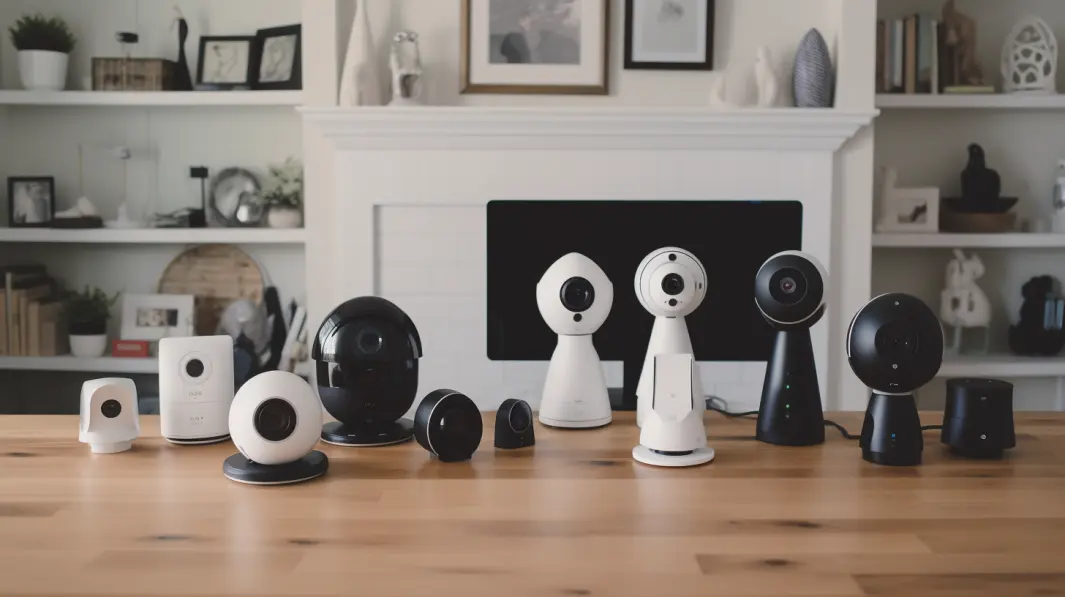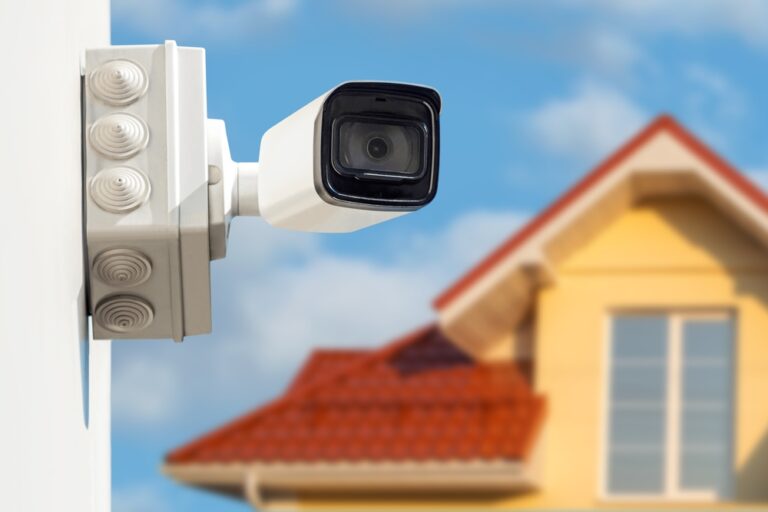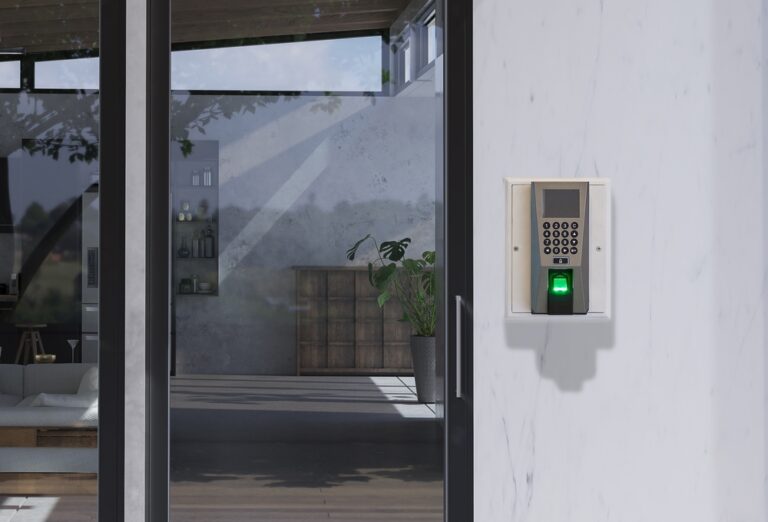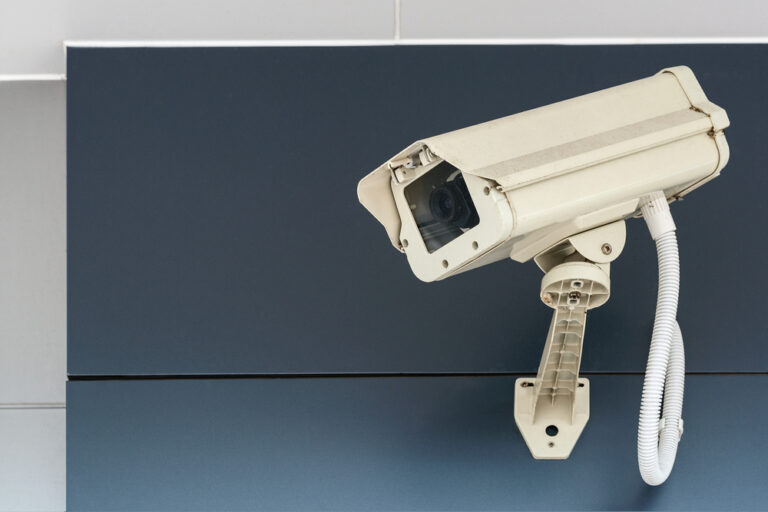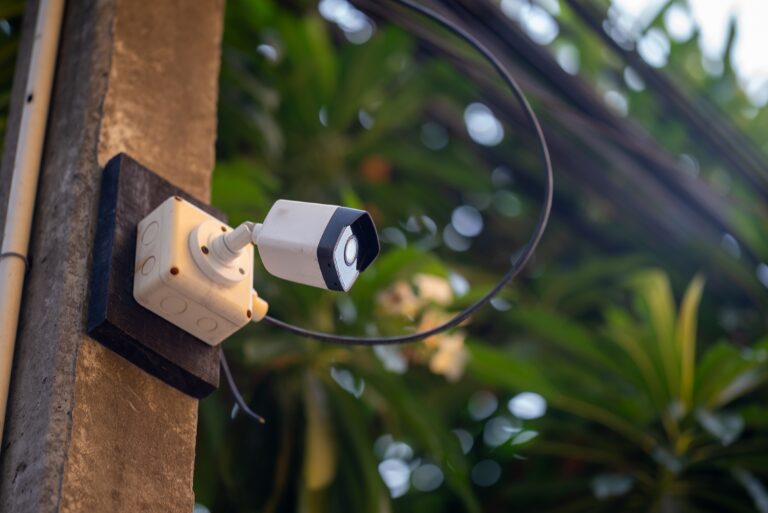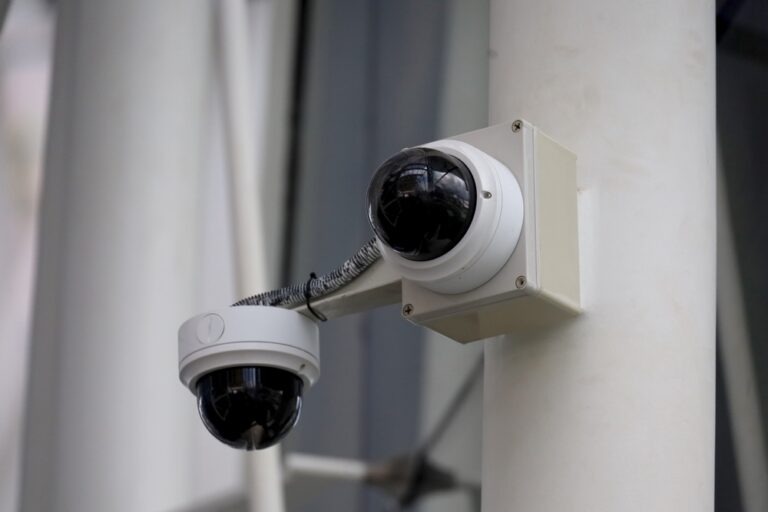Are you tired of blurry security footage? Me too. It’s frustrating knowing something happened on your property, but the video quality is so terrible that you can’t make out any defining features. This is a common issue. Many times, this is due to people buying cameras with lower resolution in an effort to save money on data. However, in the end, it hurts them because now they don’t have usable footage. So, how much data do security cameras use? The truth is there is no one-size-fits-all answer because so many factors can impact a security camera’s data consumption. However, I can give you some general guidelines and talk through important considerations so you know how to choose a security system that meets your needs without breaking the bank… or your data plan.
Factors Affecting How Much Data Security Cameras Use
Several things influence how much data your security cameras use. Knowing these will help you estimate data usage and make informed decisions about your surveillance setup.
Video Resolution
We touched on it in the intro, but video resolution is a biggie. Higher-resolution cameras like 4K capture much more detail, which is great for identifying faces or license plates.
But, you guessed it – more detail requires more data. A 4K camera running 24/7 could easily eat up several terabytes of data monthly. Lower resolution options like 1080p or even 720p use less data.
Honestly, they are often good enough for many residential cameras or small business needs. For instance, a 1080p camera recording continuously might consume around 60–100 GB of data per month. If data usage is a major concern, a 720p resolution will still provide clear images without consuming excessive bandwidth.
Frame Rate Per Seconds (FPS)
This one is all about how smooth your video footage looks. A higher frame rate per second (FPS) means more individual pictures are captured per second, resulting in a smoother, more fluid video. This is important for situations with fast motion that need to be captured clearly.
Compression Level
Here’s where things get a little technical, but stay with me; this is a game-changer. Compression basically means squeezing your video data into a smaller package without compromising much quality. There are different compression codecs, like H.264 and H.265.
H.265, the newer one, is great because it compresses footage even further while maintaining good quality. That means you use less storage and less data. Choosing cameras that support H.265 can significantly reduce data usage.
I prioritize that when looking for security cameras. It’s becoming more common, so you should be able to find it easily.
Number of Cameras
This one is pretty straightforward – more cameras, more data. It’s basic math, right? If one camera uses 20 GB of data a month, two cameras will likely use about 40GB. If they are all recording at the same time due to motion detection, the data usage goes up even further.
You need to think about the trade-off between comprehensive coverage and data consumption. It’s really important to strike a good balance that fits within your data limits.
Consider focusing on high-traffic areas rather than covering every single corner with a camera. If you encounter legal or liability issues, using Security Cameras is important.
Recording Schedule: Always-On vs. Motion-Activated
This is another decision you’ll need to make, and it can dramatically impact how much data you use. An always-on camera records continuously, generating a constant data stream.
This is fantastic for complete coverage, but it can eat through your data cap quickly, particularly if you have multiple cameras. You should make sure that the network itself is secured to prevent data breaches from unauthorized access, which can be common with onsite Digital Video Recorders or network video recorders (NVR).
Motion-activated cameras only record when they detect movement, which means they use far less data. You’ll have footage of all the important events without recording hours of empty hallways or driveways. My personal suggestion? For most home users, motion-activated is the way to go.
Other Features That Affect Data
- Audio Recording: Recording audio with your video footage can be useful, but it will increase the data generated. Decide if audio recording is really necessary for your security needs.
- Cloud Storage: Storing your footage in the cloud is incredibly convenient and lets you access it from anywhere. Cloud storage offers a higher level of security against data breaches. This is in comparison to systems using onsite Digital Video Recorders or network video recorders (NVR), which may not be as secure. It could even result in your healthcare company paying to settle data breaches. Just make sure your internet connection and data plan are up to the task.
- Pan-Tilt-Zoom (PTZ): PTZ cameras offer excellent flexibility as you can remotely control them to pan, tilt, and zoom, giving you comprehensive coverage. But using these features does mean transmitting more data as the camera moves and adjusts. Consider limiting the use of PTZ functions unless absolutely necessary to avoid excessive bandwidth consumption.
So How Much Data Do Security Cameras *Really* Use?
I know you want hard numbers, and I’m about to give them to you, BUT (notice that? I’m human) remember they’re estimates. Your usage will be different depending on your cameras and settings.
If you choose motion-activated recording, you can significantly cut these numbers down – sometimes by 50% or even more. It depends on how frequently your camera is triggered. I mean, if you live on a busy street with a lot of foot traffic, that motion detection will be working overtime. Do you know what I mean?
Ways To Manage Data Usage
Worried about exceeding your data cap? I don’t blame you. Data overage fees are no joke. These tips will help:
- Lower Your Resolution & FPS: We’ve already covered these, but these are quick wins.
- Use Motion Detection: It might be the best way to reduce data usage without drastically impacting security.
- Create Recording Schedules: Schedule your cameras to record only during specific hours, like at night or when your business is closed.
- Check for Data Compression Settings: Make sure you’re using the highest level of compression your camera system offers.
- Delete Old Recordings Regularly: You’ll free up valuable storage space (especially important if you have a limited onboard or SD card storage setup).
I always recommend you talk to your internet service provider to confirm your data limit and any overage fees. Some ISPs do offer unlimited data plans which can give you some peace of mind. You may even want to check out this list of ISPs with data caps for reference.
Choosing the right security camera system doesn’t have to be stressful or confusing. Understanding how much data your cameras use is a crucial first step. With that information and by implementing these practical tips, you can enjoy peace of mind knowing your home or business is safe and secure – all while keeping data usage in check. Got any questions about specific cameras or settings? Head over to our FAQs page or don’t hesitate to ask – I’m always here to help.
FAQs about how much data do security cameras use
Do WiFi security cameras use a lot of data?
The amount of data a WiFi security camera uses depends on several factors, so there’s no simple yes or no answer. Factors include things like resolution, frame rate, compression, recording schedule (always-on or motion-activated), and audio recording.
Higher resolution, higher frame rate, and continuous recording will naturally lead to greater data consumption.
How many GB does a security camera use per month?
This can vary tremendously. A 4K camera with continuous recording might use several hundred GB per month, while a 720p camera with motion-activated recording might use just a few GB.
How much internet do I need for security cameras?
The internet speed you need depends on the data usage of your cameras, which we discussed above. In general, though, most home internet plans should be able to handle several security cameras without a problem, especially with optimized settings and motion detection.
How many GB is 24 hours of CCTV?
This entirely depends on the camera’s settings (resolution, frame rate, compression), but to give you a ballpark, a 1080p camera with decent compression might use roughly 10-20GB per 24 hours of continuous recording.


